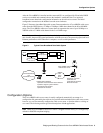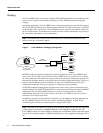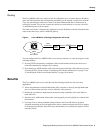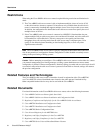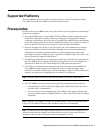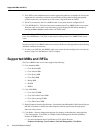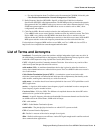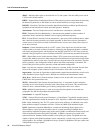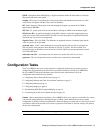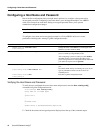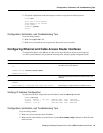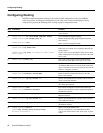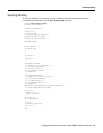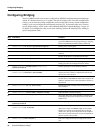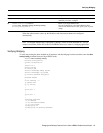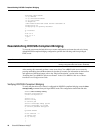
Configuration Tasks
Bridging and Routing Features for the Cisco uBR924 Cable Access Router 11
QPSK—Quadrature Phase-Shift Keying. A digital modulation method in which there are 2 data bits
represented with each baud symbol.
ranging—The process of acquiring the correct timing offset such that the transmissions of a cable
access router are aligned with the correct mini-slot boundary.
RF—Radio frequency. The portion of the electromagnetic frequency spectrum from 5 MHz to
approximately 860 MHz.
SECAM—TV system used in France and elsewhere, utilizing an 8 MHz-wide modulated signal.
SID (Service ID)—A number that defines (at the MAC sublayer) a particular mapping between a
cable access router (CM) and the CMTS. The SID is used for the purpose of upstream bandwidth
allocation and class-of-service management.
Signal-to-Noise—S/N (also SNR). The difference in amplitude between a baseband signal and the
noise in a portion of the spectrum.
spectrum reuse—CATV’s most fundamental concept. Historically, the over-the-air spectrum has
been assigned to many purposes other than that of carrying TV signals. This has resulted in an
inadequate supply of spectrum to serve the needs of viewers. Cable can reuse spectrum that is sealed
in its aluminum tubes.
subscriber unit (SU)—An alternate term for cable access router. See cable access router.
upstream—The set of frequencies used to send data from a subscriber to the headend.
Configuration Tasks
The Cisco uBR924 cable access router typically is configured automatically on power-up using a
configuration file generated by the cable service provider and delivered via the Cisco uBR7246 or
the Cisco uBR7223 universal broadband router installed at the cable headend. All of the
configuration tasks listed below are optional.
• Configuring a Host Name and Password on page 12
• Configuring Ethernet and Cable Access Router Interfaces on page 13
• Configuring Routing on page 14
• Configuring Bridging on page 16
• Reestablishing DOCSIS-Compliant Bridging on page 18
• Customizing the Cable Access Router Interface on page 19
Caution Before attempting to reconfigure a Cisco uBR924 cable access router at a subscriber site, contact
your network management, provisioning manager, or billing system administrator to ensure remote
configuration is allowed. If remote configuration is disabled, settings you make and save at the local site will
not remain in effect after the cable access router is powered off and back on. Instead, settings will return to
the previous configuration.
Note Console sessions and TTY sessions are supported by the cable access router.



